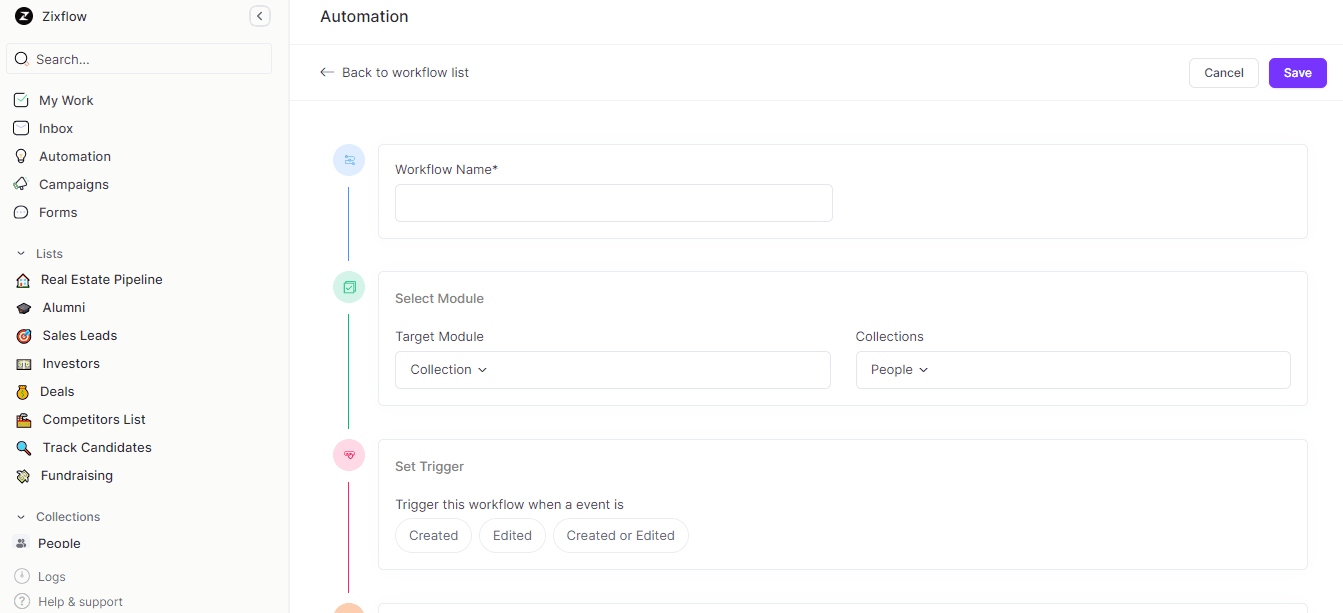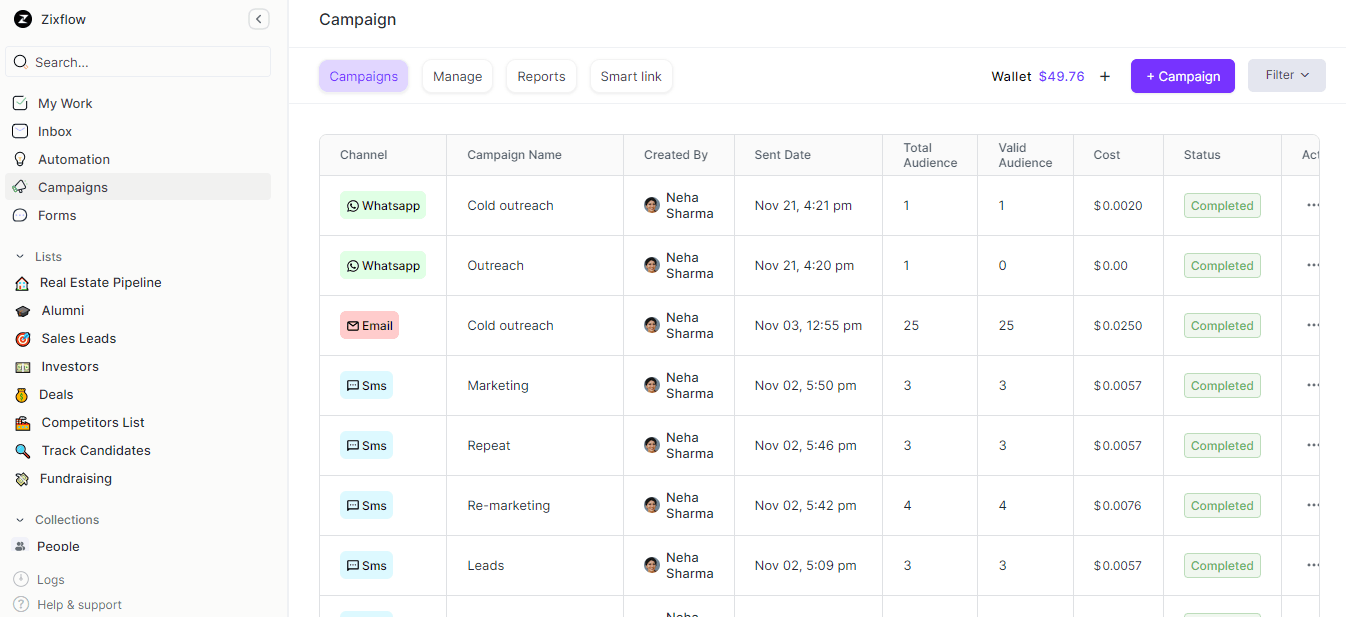13 Ways You Can Use Storytelling in Sales & Get Your Prospects to Say Yes [With Examples]
![13 Ways You Can Use Storytelling in Sales & Get Your Prospects to Say Yes [With Examples]](https://webimages.zixflow.com/6581601c9d47730be8b97eaf_Storytelling_20in_20_Sales_e0dbdfbf4d.png)
Do you remember the tale of the tortoise and the hare? In which the speedy hare races against the slow and steady tortoise. During the race the hare becomes overconfident and takes a nap, allowing the tortoise to win the race.
Now, think of how many times you have been told about this story in your childhood. Now think of the table of 17x7=?
You probably know and remember this story, even if you didn't try to learn them by heart. However, you gave hours of your childhood and did try to learn the table of seventeen, but still might have some problems in giving the direct answer to the above question. Honestly, I don't even know what 17 multiplied by 7 is!
Anyway, the thing that I’m trying to say is stories are more memorable and easy to remember as compared to the numbers and statistical data that you tell a person.
For centuries of years in the past, people told stories to build better connections with other people and this is still effective today. People use stories to make their content viral whether it is a video, advertising, or songs.
![Lifebuoy uses storytelling to attract customers [Source- aurora].](https://webimages.zixflow.com/658160548d0cdbd1ae6a93fd_Zixflow_storytelling_20in_20sales_20lifebuoy_soap_story_56244aa425.jpg)
In the above images, Lifebuoy (a soap brand) uses a story to convey how the monsoon spreads germs and makes our body dirty. They created an advertising campaign based on this story, which helps Lifebuoy to increase sales using customer engagement.
Another example of stories that make content viral is there will be many songs that will be very close to your heart, not because of the lyrics but because of their emotions.
In a world full of stories, professionals in sales are using storytelling approaches. It is the first stage in the process of sales efficiency and a powerful way to interact with customers. You can start your product demonstration and sales conversation with a blend of storytelling approaches. As a result, people remember your product or service with the help of stories.
How to tell a compelling story in sales?
Telling a great story in sales is a powerful way to engage with customers and make your product or service memorable. Here are eight tips for crafting and delivering a compelling sales story.
🎯 Understand your customers: Get to know the people you are talking to and what matters to them.
🎯 Grab their attention: Begin your story with an interesting point or a problem that your product or service can solve and also make sure that they can relate to it.
🎯 Create a hero: Position your customer as the lead character of your story. Show them how your product or service can help them achieve their goals.
🎯 Highlight benefits, not features: Everybody likes to buy if you make them realize that it will solve your problem. So, rather than listing all the features, focus on how your product or service benefits the customer.
🎯 Make a clear picture: Use simple language to help customers visualize how your product can help them.
🎯 Keep their interest: Ensure your prospect is engaged with your story by using rhetorical questions related to your story.
🎯 Social proof: Include case studies or success stories of existing happy customers to build trust with your target audience.
🎯 Tell them what to do next: End your story with a clear and interesting call to action point, guiding the customer on the next steps to take.
Remember, do not tell everything about your product to prospects at the first meeting itself. It may be possible that the prospect is not ready to absorb. Also, this will ruin the chance of a second meeting to close the deal.
For example, when Apple introduces a new product, they don’t reveal all the information at once. They give out just enough information to get people curious. This way, they can have more meetings or events to share more details and eventually convince people to buy the product.
13 different ways to use storytelling in sales
Effective storytelling is a crucial part of the pre-sales engagement practice that allows you to connect with prospects on a personal level. By crafting a story that addresses customer needs and challenges, you can create a meaningful engagement that lays the foundation for a successful sales pitch.
So, what type of story should you tell? Which storytelling approach should you choose? Well here is your answer.
Create a personal connection
Sharing a personal story related to your product or service can be a powerful and memorable way to deliver the message that you want to convey.
For instance, if you are selling financial planning services, you can tell a story about how you personally struggled with managing your finances until you found a solution. This creates a connection with the prospect, making your offering more relatable.
Address pain points
Understand the pain point of the prospect and tell a story that highlights common problems your prospect faces and how solutions given by your product or service can solve them.
Imagine you are selling a cybersecurity solution. Share a story about a company that suffered financial and reputational damage due to a data breach. Then, introduce your product as the solution against such incidents. No one wants to bear a loss of any kind in their business and you just need to tap onto that and tell them how your solution will prevent their losses.
Customer success stories
Customer testimonials are an excellent and powerful way to use in between your pitch. Sharing stories of satisfied customers who have benefited from your product or services can help you to engage your prospect better. Describe the initial challenges of the satisfied customers, the journey they took with your solution, and the positive outcomes they achieved.
These success stories can help you build rapport and credibility in sales with a prospective consumer over another salesperson.
Use analogies and metaphors
Analogies are a comparative imagery between two things that are similar. Whereas metaphors are direct imagery in which one thing is described as another. Both ways are capable enough to simplify complex concepts. Let’s understand how to use these.
For instance, if you are selling a project management tool, you might compare it to a GPS navigation system, explaining that it helps you to track team activity, avoid unnecessary follow-ups, and ensure that your team reaches the destination more efficiently. This is an example of an analogy.
Now coming to the metaphor example.

BRAUN designed products for hair grooming and hair removal needs. It has a wide range of products like trimmers, epilators, razors, and shavers. Featuring their hair straightener product, BRAUN uses visual metaphor. The hair iron shows how it straightens the noodles from their curled-up form, delivering a message to customers about how their straightener straightens even the curliest hair.
Similarly, you can use analogies and metaphors within your stories to make your words clearer and more understandable to users.
Overcoming objections
You can tell stories that address common objections or concerns. If a common objection is price, share a story about a cost-conscious customer who initially hesitated but later on discovered that long-term saving is beneficial if he or she invested.
Imagine you are a salesperson promoting solar panels, and a customer is worried about the initial cost. You can tell them about Shilpa, who had the same concern. At first, she decided to go for it. As time passed, her energy bills dropped significantly, and she not only recovered her initial investment but also started saving money.
Shilpa’s story shows how smart financial decisions can save costs in the long run and it can help your potential customers see value in your product.
The hero’s journey
Frame your prospect as the central character of your story. Describe their challenges and highlight the obstacles that they are facing. Then, introduce your product or service as the reliable solution that can help them overcome these challenges.
For example, an excellent example of the hero’s journey applied to a personal brand is Dhirubhai Ambani. He began his career as a gas-station attendant, and as a clerk in an oil company in Aden, Yemen. However, he chose to leave his job and decided to start his own business: Reliance.
In the same way, you can share real-life stories of individuals who performed their jobs heroically. In addition to this, you can follow top sales influencers to learn valuable insights like sales strategy, leadership spirit and stay updated with the latest market trends.
Historical context
Provide a historical context for your product or service. Explain its evolution and how it has continually been adapted by customers and meet their needs.
![Historical context of Coca-Cola packaging [Source- Twitter].](https://webimages.zixflow.com/658160b624c9069e80f8626e_Zixflow_storytelling_for_sales_coca_cola_aea62930d9.jpg)
For instance, you can give the example of Coca-Cola which has a long history of product evolution. It began as a simple carbonated beverage in the late 19th century and has since introduced various flavors, packaging sizes, and marketing campaigns to meet the changing taste and preference of consumers.
Providing a historical context about your company can leave a positive impact on customers, showing that your company doesn't stick to the same product or packaging; it continuously evolves its products to meet users' needs. This can help you increase leads in your bucket list by giving an idea to your customers that you are here for the long haul.
Create a vision
Create a picture of what the future would look like with your product. Imagine you are selling sustainable energy solutions. Describe a world with reduced carbon emissions, clean air, and cost savings for consumers and businesses.
Illustrating this bright and impactful future can get people excited and make them interested in what you're offering.
Company origin story
Share the story of how your company was founded. Talk about the challenges your company faced, your initial vision, and how your mission and values guide everything you do. A brief founding story helps humanize your company and offers a fresh peek into your values and purpose.
For example, Samsung, a renowned name in mobile manufacturing, started its journey as a small grocery store in Daegu, Korea. It was founded in 1938 by Lee Byung-chul. In the beginning, the company was selling groceries, noodles, and other everyday items. But, over the years, it grew into the global tech giant we know today.
Educational stories
Use stories to educate your prospects about industry trends and challenges. Share a detailed case study of how a company in their industry faced a particular issue and used your solution to improve sales process, gain a competitive edge, or increase profits.
For instance, imagine you are a sales representative at Shopify, and you want to educate your prospects about the latest industry trends and challenges. To do this, you can highlight the story of an ecommerce business operating in the same industry as your prospect. Share the obstacles faced by this company in the online sales journey and how this company used Shopify’s to enhance their online sales.
Humorous anecdotes
Anecdotes are simple, short stories, typically humorous, about real people or events. It can make the conversation more engaging. You need to ensure that the humor is relevant to the context and customized to the prospect's personality. Also, a humorous story can attract prospects and make the interaction more memorable.
Recently I came across a humorous story about smoke alarms in an article from Hindustan Times. Here it is,

After reading it, I was impressed and couldn't resist sharing this funny anecdote with my family, friends, and now here on the blog. The main reason for sharing this story is to highlight that telling such kind of engaging stories can effectively capture your prospects' attention and promote your products or services.
They will reach your customers just how this one reached me!
Surprise ending
Crafting stories with unexpected twists or outcomes is a powerful way for engaging your audience and creating a lasting impression. By incorporating surprise endings into your stories, you not only capture your prospect’s attention but also provide them with a unique and memorable experience.
This not only grabs their attention but also sticks in their memory. When you mix things up in your tales, it keeps people interested.
For example, in the above video parents start by sharing how their child teaches them about different things. The story takes a surprising turn with the introduction of an OLX advertisement. This unexpected twist seamlessly integrates the product into the narrative, adding a creative touch to the storytelling and engagingly delivering the promotional message.
So, whenever you’re telling a story, remember the power of surprise. It can make things interesting, create a connection between you and your audience, and make your story stick in people’s minds.
Time-sensitive story
Time-sensitive story is a tale that matters right now. It could be news or an event, but for a salesperson, it is definitely related to the offer. These stories highlight the time-sensitive nature of your offering and create a sense of urgency in customers' minds to make quick decisions.
For example, you might offer a 10% additional discount on your product or service if the customer decides to make a purchase by the end of business hours. Also, mention that this exclusive deal is available to customers because they have shown genuine interest, but it’s only valid until 5:00 PM today. This creates a sense of urgency, encouraging people to act quickly to take advantage of the discount.
Starting with a storytelling approach is a great way to engage your audience. However, to sustain that conversation, it's important to do regular follow-ups with your prospects and create automated touchpoint activities to drive deeper engagement with your audience.
To achieve this, you need a CRM that provides tools for sales cadence, workflow automation, and creates personalized campaigns for your business to engage your audience effectively.
All these features can help you get your prospects to say a big yes. You might be wondering why. Let me share more details about these features and how they can benefit your storytelling approach.
Sales cadence
Sales cadence is like a planned schedule for talking to potential customers. It requires well-structured scheduling and a range of multi-channel sales engagement including email, phone calls, SMS, and social media. It helps keep communication consistent and increases the chances of turning a potential customer into an actual one.

Workflow automation
Workflow automation enables you to automate repetitive tasks you perform daily. It utilizes technology to do things automatically, like sending follow-up emails or updating customer information. This saves time and makes sure that important steps in the sales process are always done correctly.

Personalized campaigns
Creating personalized campaigns can help you to create customized messages for each potential customer. It involves tailoring emails or ads to fit the interests and needs of each customer. This way, the communication feels more personal, and customers are more likely to pay attention and engage with the content.

With Zixflow, you can now schedule all your tasks in a single dashboard. Be it scheduling sales cadence, following up with your prospects, or creating marketing campaigns, you can automate it all. All you need to do is simply assign specific job titles for better comprehension and set up cues along with the associated tasks.
These tools allow you to continue the conversation, provide valuable information, and build stronger and lasting relationships with your potential customers.
Tips for better storytelling and get your prospects to say yes
✅ The do’s
-
Understand the needs, preferences, and pain points of your audience.
-
Share stories that are relatable to prospects.
-
Craft a fascinating story structure by understanding consumer needs and behavior.
-
Keep your story concise and avoid irrelevant details.
-
Emphasize how your product or service solves customer problems.
-
Use emotions to connect with the audience.
-
Engage your prospects by asking questions during storytelling.
-
Actively listen to your prospects and change your story based on their responses.
❌ The don’ts
-
Do not overcomplicate your story.
-
Do not use complicated language and industry-specific terms, and difficult words.
-
Do not tell general stories.
-
Do not pace your story rather deliver it comfortably.
-
Do not talk about yourself, rather focus on the benefits to the customer.
-
Do not use negative stories and keep your story positive and inspiring.
Increase your sales success with storytelling approach
Storytelling is a powerful way in sales. It helps you to build connections, engage customers, and make products memorable.
In a frequent study by Jennifer Aaker, a professor at Stanford Graduate School of Business found that stories are up to 22 times more memorable than facts or statistics alone.
There are various storytelling approaches, from personal stories to customer success tales, analogies, and metaphors. Telling a story that resonates with your audience can greatly enhance your sales success. In a data-filled world, it's the stories that truly make a lasting impression and increase your chances of succeeding in sales.
